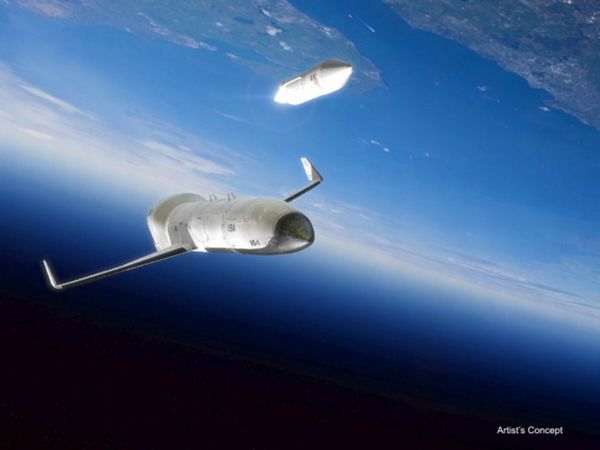The US military is looking forward to create an affordable and efficient robotic space plane that has an ability of embarking payloads directly into the orbit. DARPA has already granted the design contract to three firms namely, Boeing, Masten Space Systems and Northrop Grumman.
For the initial stage of the Experimental Spaceplane project, also called the XS-1, the firms have collaborated with similar other aerospace companies. For instance, Boeing is working with Blue Origin, Masten is teaming up with XCOR Aerospace and Northrop Grumman is collaborating with the Virgin Galactic.
Boeing has already credited with one robotic space plane to the U.S. military. The Boeing X-37B is a reusable unmanned space plane, which lands back on the surface of the earth after being ejected into the space by a rocket. While one X-37B spacecraft is being orbiting Earth since the fall of 2012.
DARPA envisions that after the concretization of Experimental Spaceplane project, spaceflights would become more affordable and routine relatively. The unmanned vehicle is expected to boost payloads of about 1,361 to 2,268 kilograms into the orbit for less than $5 million per flight, with an efficiency of launching no less than 10 times in a 10-day span.
First stage of the plane would be reusable and DARPA plans to have one or more expendable upper stages. With hypersonic speed the vehicle will fly to the suborbital space and then descend to earth for its next launch. The upper stage would get detached deploying the freight into low-Earth orbit.
Phase 1 is dedicated to demonstration of the vehicle by each firms, where they would be required to come up with a plan for building and flight-testing XS-1 spacecraft systems, while the phase 2 competition is expected to be held by next year. However, the officials are anticipating more than one flight tests demonstrations that might come from NASA or the Air Force, too early to predict, let’s wait and watch.
Source: Space.com





